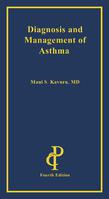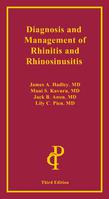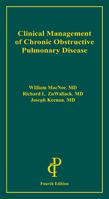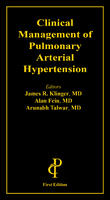Respiratory
Review of all aspects of asthma from definition and classification through diagnosis and treatment. The role of bronchodilators, anti-inflammatory agents, anti-leukotrienes, and anti-IGE therapy in treatment is discussed, along with complete drug-dosing information. Detailed treatment algorithms based on NIH guidelines are presented. A separate chapter on combination therapy and its importance is included.
Discusses antihistamines, intranasal antihistamines, intranasal steroids, and anticholinergic nasal sprays for rhinitis treatment. Pathogenesis, classification, differential diagnosis, clinical evaluation, and management are also presented. Diagnosis and therapy of sinusitis are reviewed, with numerous endoscopy studies, x-rays, and CT scans presented to aid in diagnosis. A treatment algorithm provides a suggested approach to treatment.
Targeted to primary care physicians and reviews differential diagnosis, pathogenesis, clinical management of COPD, specific treatment regimens, treatment of acute exacerbations, goals of therapy, prognosis, nonpharmcologic management, and smoking cessation. The main focus of the text is pharmacologic treatment of COPD.
Clinical Management of Pulmonary Arterial Hypertension is a pocket-sized handbook designed to be carried by medical residents and fellows or kept on the desktop of chest physicians and other physicians involved in diagnosis and treatment. It provides a brief overview of the all the major topics of PH, with pertinent figures, a short list of highly selected references and a summary of key points at the end of each chapter. It has been specifically designed to allow the busy practitioner to quickly access key current information regarding the diagnosis and management of PH. All presently approved medications are discussed along with the most recent treatment guidelines published within the last year by the WHO and the ACCP.
The rapid expansion of medical treatments for PAH has not only added to the complexity of managing this challenging disease but has greatly enhanced the awareness of pulmonary vascular disease in general. Chest physicians, internists, and family physicians are increasingly being asked to evaluate elevated pulmonary artery pressure found on echo and distinguish PAH from PH that is associated with chronic heart failure and lung disease. This handbook provides a quick and easy to use reference for the management of PAH that we anticipate will be quite popular with both young and experienced practitioners.
Treatment of community-acquired pneumonia and hospital-acquired pneumonia, when to hospitalize a patient, methods for identifying low-risk CAP patients, switch and step-down therapy, approach to non-resolving pneumonia, management of parapneumonic effusions, empyema, and chronic bronchitis are discussed. The various antimicrobial agents are reviewed in detail with suggested treatment regimens.




(PNEU-4).jpg)